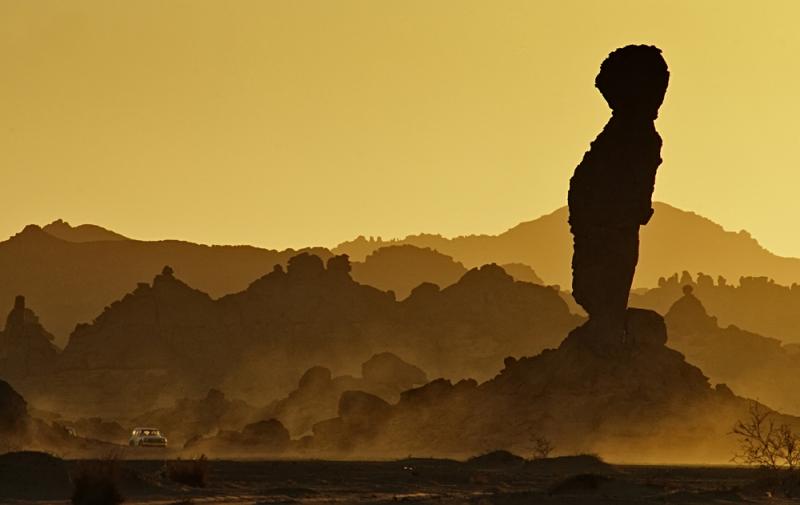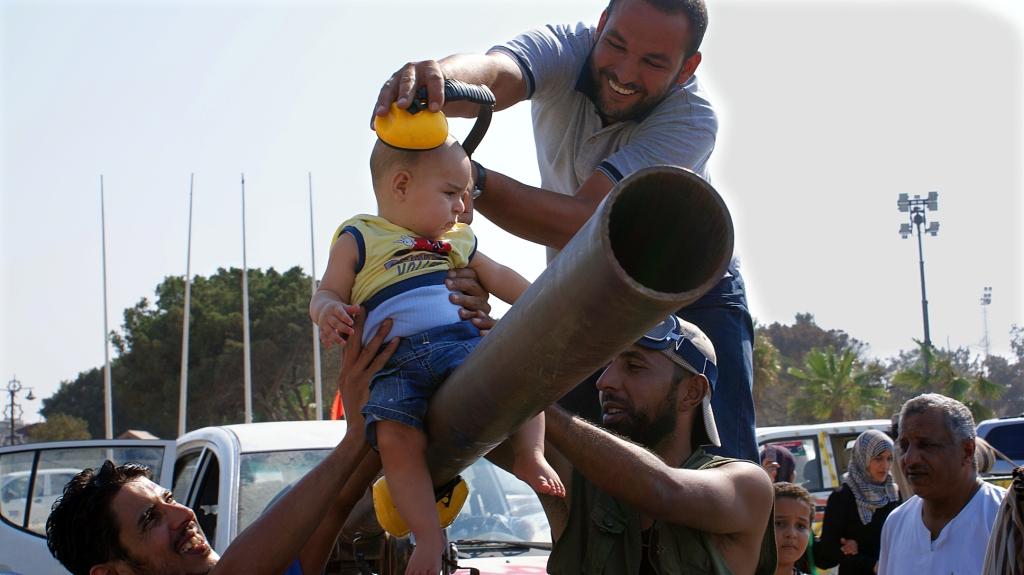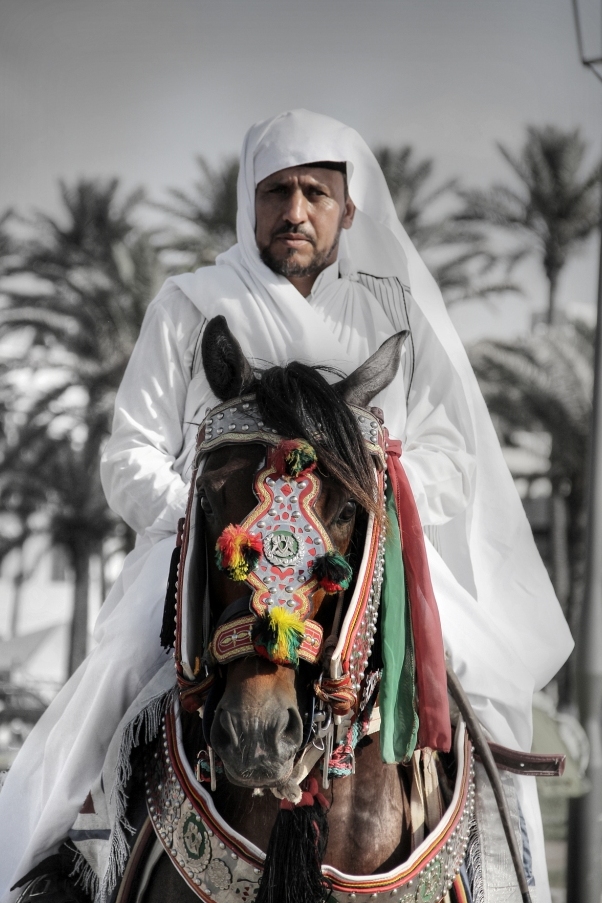theartsdesk in Tripoli: Photographing a Revolution | reviews, news & interviews
theartsdesk in Tripoli: Photographing a Revolution
theartsdesk in Tripoli: Photographing a Revolution
A new exhibition captures the complexities of a country seeking a new beginning

The most striking thing about the first photographic exhibition to specifically address post-revolution Libya is that there is no blood. Libya: A Nation Reborn is situated in the marbled ballroom of Tripoli’s five-star Corinthia Hotel – a long way from the dust, sweat and blood of the streets – and poignantly lays out the reality of the revolution. And its costs.
The recent showing was the work of a new generation of Libyan men and women, most of whom had never even touched a camera barely a year ago. “It is now time the people of the world realised the new Libya,” says one of the organisers, Rana Duzan, to resounding applause from the crowd.
 The week-long exhibition could have been expected to show more fighting, more conflict, more death. Instead, this group of inexperienced young artists convey the cost of war not in a battlefield scene but in the face of a crying grandmother, a lost child, white funeral shrouds, and soldiers in the back of a truck, heads bowed and too exhausted even to walk; or in a woman’s ink-stained finger, held up in pride beside a toothless grin to prove that she had voted in the country’s first democratic election in living memory.
The week-long exhibition could have been expected to show more fighting, more conflict, more death. Instead, this group of inexperienced young artists convey the cost of war not in a battlefield scene but in the face of a crying grandmother, a lost child, white funeral shrouds, and soldiers in the back of a truck, heads bowed and too exhausted even to walk; or in a woman’s ink-stained finger, held up in pride beside a toothless grin to prove that she had voted in the country’s first democratic election in living memory.
For most of the world, the defining images of Libya’s revolution will always be the graphic scenes of the capture, abuse and execution of Colonel Muammar Qaddafi. But the reality is more than that. His abuse at the hands of his captors, or his body put on display in a Misurata store, are absent from this display. “This society is like a new-born baby,” says Duzan. “This nation has had enough. The media and civil society are [involved] in the formation of a new, stronger society.”
The exhibition was organised by 1Libya, a media project comprising various different donors, which provided training for people who a few months ago were students or in dead-end jobs. The photos are of ordinary Libyans or anti-regime fighters. There are none of pro-Qaddafi forces. The exhibition’s 30-year-old major prize-winner, Aimen Ashur, is rapt. “It’s like holding a camera is building something,” he says, speaking in Libyan Arabic, which is translated through a friend. “We will win our freedom. I never thought I could build what I do with a camera.”
 Before the revolution, Ashur had been jailed for distributing anti-Qaddafi leaflets. His winning photo (pictured above), taken from behind, is of a pick-up crammed with rebel troops, heads down, some with bandaged legs, heading through a Qaddafi-era triumphal arch in Tripoli. They are driving past the tangled wreckage of Qaddafi's main Ban Al Azizia compound. After his release, he chose a camera rather than a gun, despite having no firm job. “I just like telling the stories, the stories of my country and what has happened with a camera,” he says. Now his work appears in several publications around the country.
Before the revolution, Ashur had been jailed for distributing anti-Qaddafi leaflets. His winning photo (pictured above), taken from behind, is of a pick-up crammed with rebel troops, heads down, some with bandaged legs, heading through a Qaddafi-era triumphal arch in Tripoli. They are driving past the tangled wreckage of Qaddafi's main Ban Al Azizia compound. After his release, he chose a camera rather than a gun, despite having no firm job. “I just like telling the stories, the stories of my country and what has happened with a camera,” he says. Now his work appears in several publications around the country.
Duzan says the work of this new breed of photographers played an important role in the revolution. “It’s their pictures, their voices that created the international swell of support,” she says. “They put out our message to the world.”
Abdorahim Nwiji is a 22-year-old architect and engineering student at Tripoli university. He has been interested in photography since the age of 13 (pictured below, two examples of his work). “I want a new Libya, without injustice, and for people to live in well-being and happiness, young people in particular," he says. "In the past era there was much unemployment and not enough programs to help young people. We will all work for that.”

Since the end of the Qaddafi regime more than 100 new media organisations have started up across the country and across all media sectors – TV, radio, print and online. Many, of course, will ultimately fail, but in the short-term, developing the new media environment has attracted strong foreign funding, material and training support.

In many ways, the country is going through the same painful media transformation as neighbouring Tunisia and Egypt. Says Qatar-based Al Jazeera: “Although it's readily acknowledged that building Libya’s new infrastructure will take time, some journalists are running out of patience by the inability to pass a law guaranteeing the media - especially state media - editorial freedom and independence. Journalists - and those who train them - shared their concerns over potentially being targeted by Libya's many armed militia groups. They also worry about the government, which says it supports a free media, but can revert to the old ways when reporters push for answers.”
All photographs copyright of Aimen Ashur and Abdorahim Nwiji
Explore topics
Share this article
The future of Arts Journalism
You can stop theartsdesk.com closing!
We urgently need financing to survive. Our fundraising drive has thus far raised £49,000 but we need to reach £100,000 or we will be forced to close. Please contribute here: https://gofund.me/c3f6033d
And if you can forward this information to anyone who might assist, we’d be grateful.

Subscribe to theartsdesk.com
Thank you for continuing to read our work on theartsdesk.com. For unlimited access to every article in its entirety, including our archive of more than 15,000 pieces, we're asking for £5 per month or £40 per year. We feel it's a very good deal, and hope you do too.
To take a subscription now simply click here.
And if you're looking for that extra gift for a friend or family member, why not treat them to a theartsdesk.com gift subscription?
more Visual arts
 'We are bowled over!' Thank you for your messages of love and support
Much-appreciated words of commendation from readers and the cultural community
'We are bowled over!' Thank you for your messages of love and support
Much-appreciated words of commendation from readers and the cultural community
 Folkestone Triennial 2025 - landscape, seascape, art lovers' escape
Locally rooted festival brings home many but not all global concerns
Folkestone Triennial 2025 - landscape, seascape, art lovers' escape
Locally rooted festival brings home many but not all global concerns
 Sir Brian Clarke (1953-2025) - a personal tribute
Remembering an artist with a gift for the transcendent
Sir Brian Clarke (1953-2025) - a personal tribute
Remembering an artist with a gift for the transcendent
 Emily Kam Kngwarray, Tate Modern review - glimpses of another world
Pictures that are an affirmation of belonging
Emily Kam Kngwarray, Tate Modern review - glimpses of another world
Pictures that are an affirmation of belonging
 Kiefer / Van Gogh, Royal Academy review - a pairing of opposites
Small scale intensity meets large scale melodrama
Kiefer / Van Gogh, Royal Academy review - a pairing of opposites
Small scale intensity meets large scale melodrama
 Jenny Saville: The Anatomy of Painting, National Portrait Gallery review - a protégé losing her way
A brilliant painter in search of a worthwhile subject
Jenny Saville: The Anatomy of Painting, National Portrait Gallery review - a protégé losing her way
A brilliant painter in search of a worthwhile subject
 Abstract Erotic, Courtauld Gallery review - sculpture that is sensuous, funny and subversive
Testing the boundaries of good taste, and winning
Abstract Erotic, Courtauld Gallery review - sculpture that is sensuous, funny and subversive
Testing the boundaries of good taste, and winning
 Edward Burra, Tate Britain review - watercolour made mainstream
Social satire with a nasty bite
Edward Burra, Tate Britain review - watercolour made mainstream
Social satire with a nasty bite
 Ithell Colquhoun, Tate Britain review - revelations of a weird and wonderful world
Emanations from the unconscious
Ithell Colquhoun, Tate Britain review - revelations of a weird and wonderful world
Emanations from the unconscious
 Rachel Jones: Gated Canyons, Dulwich Picture Gallery review - teeth with a real bite
Mouths have never looked so good
Rachel Jones: Gated Canyons, Dulwich Picture Gallery review - teeth with a real bite
Mouths have never looked so good
 Yoshitomo Nara, Hayward Gallery review - sickeningly cute kids
How to make millions out of kitsch
Yoshitomo Nara, Hayward Gallery review - sickeningly cute kids
How to make millions out of kitsch
 Hamad Butt: Apprehensions, Whitechapel Gallery review - cool, calm and potentially lethal
The YBA who didn’t have time to become a household name
Hamad Butt: Apprehensions, Whitechapel Gallery review - cool, calm and potentially lethal
The YBA who didn’t have time to become a household name

Add comment